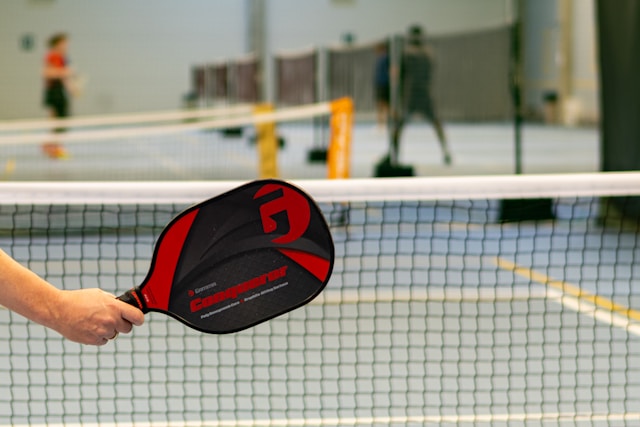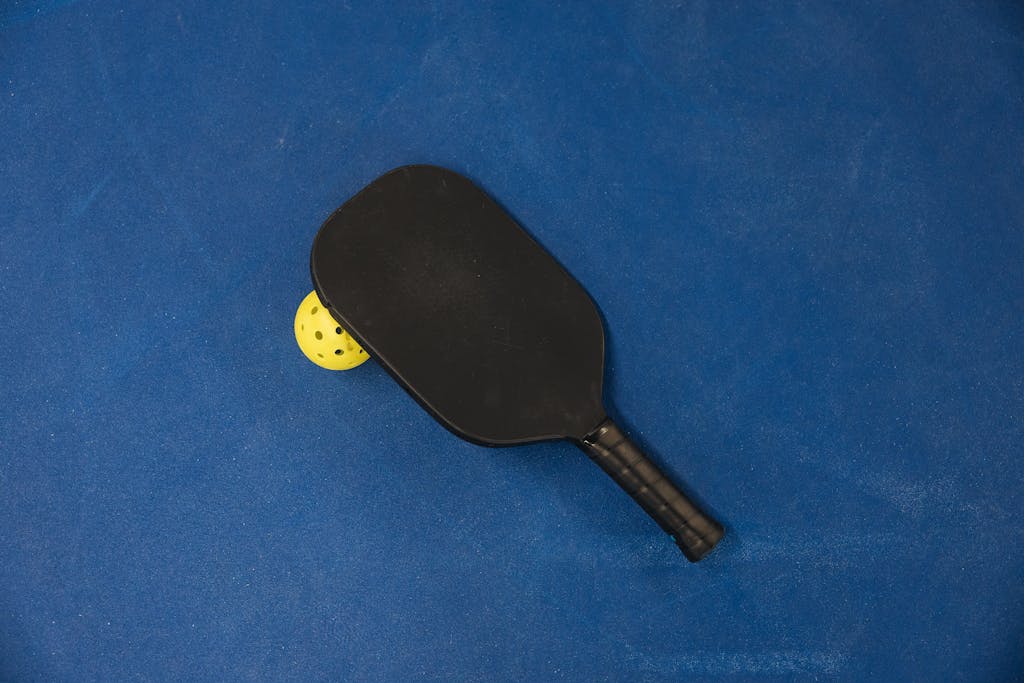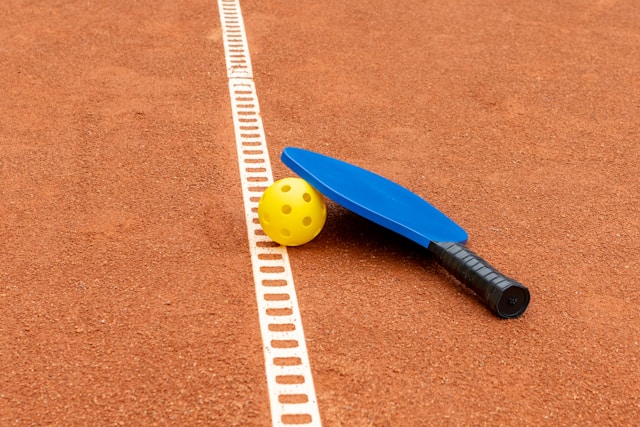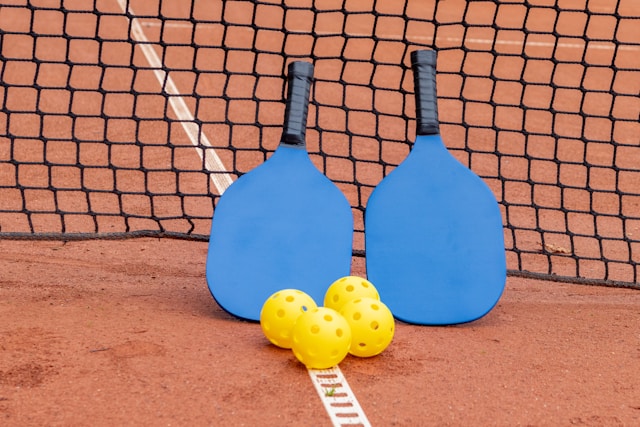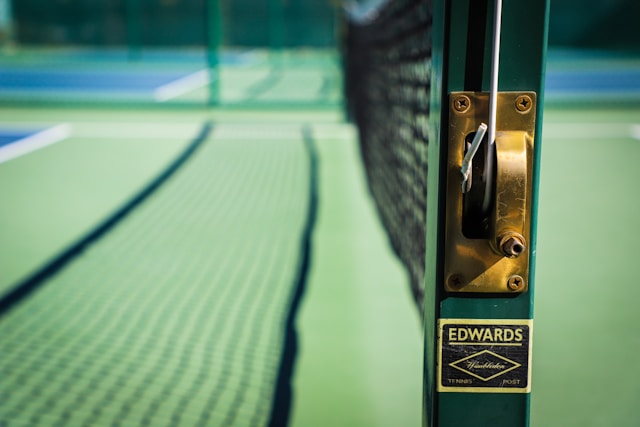Understanding Materials, Weight, And Grip In Pickleball Paddles
There are some affiliate links below, but they are all products I highly recommend. For more info, view my disclosure here.
Are you looking to improve your game on the pickleball court? One important factor to consider is your paddle.
Understanding the materials, weight, and grip of your paddle can make a significant difference in your performance.
Materials play a crucial role in the construction of a pickleball paddle. Different materials provide unique benefits, such as durability or increased power.
The weight of your paddle can affect your swing and control, and the grip can impact your comfort and precision on the court.
By understanding these factors, you can choose the perfect paddle for your playing style and take your game to the next level.
Let’s dive in and explore the world of pickleball paddles!
The Importance of Materials in Pickleball Paddles
If you want a top-performing pickleball paddle, you need to pay attention to the materials it’s made of! The materials used in the construction of a pickleball paddle greatly affect its performance on the court.
The most common materials used in pickleball paddles are graphite, fiberglass, and composite materials.
Graphite pickleball paddles are known for their lightweight and stiff properties, which allow for quick and powerful shots. These paddles are usually preferred by advanced players who have a fast swing speed and can generate a lot of power on their own. However, graphite paddles tend to be more expensive than other materials, and they are also less durable.
Fiberglass pickleball paddles are great for players who are just starting out or those who prefer a softer touch. These paddles have a more forgiving surface, which means they absorb more of the impact from the ball and provide a better feel for the player. Fiberglass paddles are also more affordable than graphite paddles, and they are more durable. However, they may not provide as much power as graphite paddles.
Composite materials are a combination of different materials, such as fiberglass, graphite, and polymer. These paddles offer a balance between power and control, making them a popular choice among intermediate players. They are also more affordable than graphite paddles and more durable than fiberglass paddles. However, the performance of composite paddles may vary depending on the specific materials used in their construction.
Weight: Finding the Right Balance for Your Game
Achieving the perfect balance in your game depends on finding a paddle that suits your playing style and feels comfortable in your hand. Weight is a crucial factor in determining the right paddle for you.
A heavier paddle can give you more power, but it can also tire you out quickly. On the other hand, a lighter paddle can give you more control, but it may not be as effective for power shots.
To find the right weight for your paddle, you need to consider your playing style. If you’re an aggressive player who likes to hit hard shots, a heavier paddle might be the best option for you. However, if you’re a finesse player who relies on control and placement, a lighter paddle might be more suitable.
It’s also important to take into account your physical ability and any potential injuries that may affect your grip or arm strength. Once you’ve found the right weight for your paddle, you can focus on improving your grip.
A good grip is essential for controlling your shots and preventing the paddle from slipping out of your hand. Experiment with different grip styles and find the one that feels most comfortable for you.
With the right weight and grip, you can take your pickleball game to the next level.
Grip: Comfort and Control on the Court
Get a comfortable and secure grip on your paddle for better control and more fun on the pickleball court. The grip of your paddle plays a crucial role in your performance, as it affects your ability to control the direction and speed of the ball. A good grip also helps prevent injuries and reduces fatigue during long matches.
When choosing a grip, consider the size and shape of your hand, as well as the type of material used. Many paddles come with a standard grip size, but some models allow you to customize the grip to fit your hand perfectly. Some grips are made with moisture-wicking materials, which can help keep your hands dry and prevent slipping.
To ensure a secure grip, make sure to hold the paddle with a relaxed but firm grip. Avoid gripping too tightly, as this can cause tension in your arm and affect your shots. Also, make sure to keep your wrist loose and flexible, as this will allow you to make quick adjustments and maintain control over the ball.
With a comfortable and secure grip, you’ll be able to play your best and enjoy every moment on the court.
Comparing Graphite, Composite, and Wood Paddles
When comparing graphite, composite, and wood paddles, it’s important to consider factors such as durability, power, and cost.
Graphite paddles are known for their lightweight and high performance, making them a popular choice among players who value power and speed. They also tend to be more durable than wood paddles, but can be more expensive.
Composite paddles, on the other hand, are made from a combination of materials such as fiberglass, carbon fiber, and polymer. They offer a good balance of power, control, and durability, and are considered a good option for intermediate players. They are also more affordable than graphite paddles, but may not provide the same level of performance.
Wood paddles are the most traditional type of paddle and are often used by beginners or recreational players. They are affordable and provide a good grip, but may not offer the same power and control as graphite or composite paddles. However, they are durable and can be a good option for players who are just starting out or who prefer a more traditional feel on the court.
Choosing the Perfect Paddle for Your Playing Style
You’ll be amazed at how your game can improve once you find the perfect paddle that complements your playing style.
When choosing a paddle, you should consider your playing style, skill level, and personal preferences. A paddle that works well for one player may not necessarily work for another, so it’s important to find the right fit for you.
If you’re an aggressive player who likes to hit hard shots, a heavier paddle with a larger sweet spot may be best. On the other hand, if you prefer a finesse game with more control, a lighter paddle with a smaller sweet spot may be more suitable.
The grip of the paddle is crucial to your playing style. A larger grip can help players with bigger hands, while a smaller grip can benefit those with smaller hands.
Ultimately, the perfect paddle for you will depend on your individual playing style and preferences. Don’t be afraid to try out different paddles until you find the one that feels right.
By taking the time to find the perfect paddle, you’ll be able to improve your game and enjoy playing even more.
Remember, the materials used in your paddle can affect its durability and playability. When it comes to weight, finding the right balance can improve your swing and reduce fatigue. Grip is crucial for comfort and control on the court.
Now that you know the basics of paddle composition, it’s time to choose the perfect one for your playing style. Consider the pros and cons of graphite, composite, and wood paddles, and find the one that best suits your needs.
